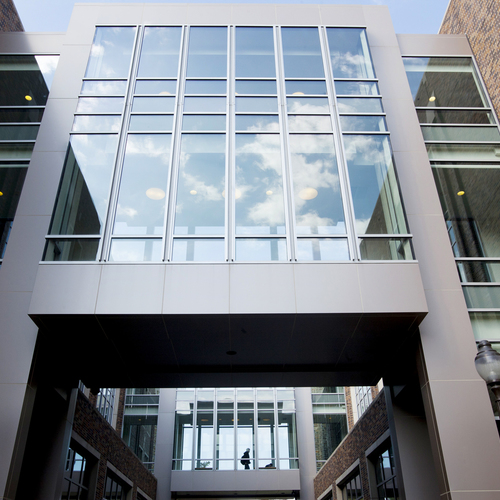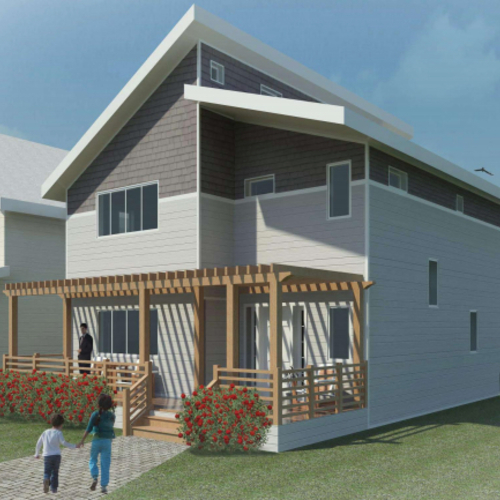
Image Credit: U.S. Department of Energy
Energy Star Windows, Weatherization, Building Deconstruction — and More
#
BRATTLEBORO, Vt. — The “In” box at GreenBuildingAdvisor’s news desk is overflowing, so it’s time for a roundup of news headlines on a variety of topics: Energy Star window standards, a proposed national program to subsidize energy retrofit work, employment growth at Conservation Services Group, an update on weatherization funding, Seattle’s efforts to encourage building deconstruction, the tenth birthday of the EarthCraft Homes program, a Southampton developer’s struggle to get approval for a pea-stone parking lot, Canadian feed-in tariffs, and the Maldives’ commitment to a carbon-free future.
DOE Proposes Changes to Energy Star Window Criteria
#
WASHINGTON, D.C. — The U.S. Department of Energy has released the latest version of its proposed new criteria for Energy Star windows. The latest draft of the proposed specification includes the following changes:
- In the northern zone, the maximum U-factor would change from 0.35 to 0.32.
- In the north central zone, the maximum U-factor would change from 0.40 to 0.32, and the maximum solar heat gain coefficient (SHGC) would change from 0.55 to 0.40.
- In the south central zone, the maximum U-factor would change from 0.40 to 0.35, and the maximum SHGC would change from 0.40 to 0.30.
- In the southern zone, the maximum U-factor would change from 0.65 to 0.60, and the maximum SHGC would change from 0.40 to 0.27.
To learn more, read:
- An announcement from Energy Star Program Manager Richard Karney.
- An article in EcoHome on the proposed criteria.
- The proposal from the Department of Energy.
Vermont Representative Announces Energy Retrofit Plan
#
BURINGTON, Vt. — Representative Peter Welch (D-Vt.) has proposed federal legislation to invest $10 billion over four years in a national initiative to weatherize millions of existing homes and commercial buildings. “Investing in energy efficiency is a practical, commonsense strategy to create jobs, save on energy costs, and do our part to fight climate change,” Welch said. Welch’s bill, called the Retrofit for Energy and Environmental Performance Act, would provide homeowner incentives of $1,000 to $3,000 for achieving a 10% to 20% decrease in residential energy use, with another $150 for every additional percentage point of energy savings achieved. Read more in a report from the Associated Press.
Conservation Services Group Bucks the Economic Trend
#
WESTBOROUGH, Mass. — Conservation Services Group (CSG), a Massachusetts-based energy consulting firm, is expanding rapidly in spite of the nation’s shrinking economy. Over the past four years, the number of jobs at CSG has increased 111%. CSG contracts with utilities and states to provide a variety of services, including the management of residential energy-efficiency programs. Stephen Cowell, CSG’s chief executive officer, explained, “Energy efficiency is sweeping the country. CSG is now working in states that have not espoused conservation in the past. . . . Our growth is testimony to the increasing awareness, importance, and cost-effectiveness of energy efficiency. It is a very exciting time to be working in this industry.” For more information, read the CSG press release.
States Begin Receiving Weatherization Funds
#
WASHINGTON, D.C. — Within a few days, states are set to receive the first installment of the weatherization funding authorized by President Obama’s recently passed stimulus package. The federal government will soon be sending states $780 million in the first installment of the promised $8 billion in federal weatherization funding. To see a chart listing the amounts being sent to each state, read the report posted on GreenBiz.com.
Seattle Introduces Flexible Demolition Permits to Encourage Building Deconstruction
#
SEATTLE, Wash. — In hopes of encouraging green building deconstruction, the Seattle Department of Planning and Development has modified the way it issues demolition permits. A new voluntary permitting option will provide more time for green builders to salvage reusable materials from buildings slated for demolition. Rather than requiring simultaneous permits for demolition and new construction, the planning department will now issue a separate demolition permit prior to issuing a new-construction permit, as long as the existing building is being deconstructed and materials are being salvaged for reuse. Among those frustrated by the old permitting process was Pat Finn of RE Store in Ballard. “Being in the reuse industry, we’ve had a hard time getting into some houses to salvage before demolition because the builder, homeowner, or contractor does not get their demolition permits before they get access into the building,” said Finn. “We’re pretty excited that the city is looking for ways to lessen the waste and allow opportunity for more salvageable waste.” For more information, read the report from the Ballard News-Tribune.
EarthCraft Homes Program Celebrates Tenth Birthday
#
ATLANTA, Ga. — Atlanta’s green building program, EarthCraft Homes, recently celebrated its tenth birthday. Established by the Greater Atlanta Home Builders Association and Southface Energy Institute, the EarthCraft Homes program has spread to six Southeast states. According to the Atlanta Journal-Constitution, “The program was started after the U.S. Environmental Protection Agency contacted the National Association of Home Builders about creating standards for energy-efficient construction. As the nation’s largest home builders group at the time, the Greater Atlanta Home Builders Association was awarded the job of coming up with a green-building template.” More than 5,200 EarthCraft homes have been built over the last decade. For more information, read an article in the Atlanta Journal-Constitution.
Town Balks When LEED Builder Specifies Pea Stone, Not Asphalt
#
SOUTHAMPTON, N.Y. — When real estate developer Ari Meisel set out to build a LEED Platinum building in Southampton, the town objected to his parking-lot specifications. According to the East Hampton Star, “The Meisels wanted to use crushed pea stone, which filters water and prevents runoff. ‘It was a problem with the town,’ Mr. Meisel said of Southampton. ‘Even though 200 yards away there was the same parking lot, they were pushing for black asphalt, which is terrible for the environment and impossible for LEED Platinum.’” The article quotes State Assemblyman Fred W. Thiele Jr., who said that New York was “way behind” other states in offering incentives or a more enlightened building code. “There were good reasons for the regulatory requirements when they were instituted,” he said, “but with developments in renewable energy and conservation technology, they need to be rethought.” Read more about the case in an article in the East Hampton Star.
Ontario Proposes Generous Feed-in Tariffs
#
TORONTO, Ontario — The province of Ontario has proposed a generous new feed-in tariff for electricity produced by photovoltaic (PV) arrays. The proposal calls for homeowners with PV systems of 10 kW or less to receive 80 cents (Canadian) per kWh for 100% of the array’s electrical production. Read more in an article posted at SolarBuzz.com.
Maldives Vows to Become World’s First Carbon-Neutral Country
#
MALE, Maldives — The president of the Maldives has pledged that his country will becomes the world’s first carbon-neutral country by 2019. President Mohamed Nasheed made the commitment to a carbon-free future in response to scientists’ predictions that the low-lying Indian Ocean nation, much of which has an elevation of only 5 feet above sea level, will be among the first countries to disappear if oceans continue to rise. Nasheed plans to invest $1.1 billion in wind and solar projects to replace fossil fuel imports. “Going green might cost a lot, but refusing to act now will cost us the Earth,” said Nasheed. Read more in a Reuters News article.
Weekly Newsletter
Get building science and energy efficiency advice, plus special offers, in your inbox.















One Comment
Weatherization funds, state by state
Here's the state-by-state breakdown of weatherization funding, courtesy of the DOE's Office of Energy Efficiency and Renewable Energy:
DOE will award a total of roughly $127.3 million to Alabama, $46.3 million to Alaska, $112.4 million to Arizona, $87.5 million to Arkansas, $412 million to California, $128.7 million to Colorado, $102.8 million to Connecticut, $38 million to Delaware, $302 million to Florida, $207.2 million to Georgia, $30 million to Hawaii, $59 million to Idaho, $344 million to Illinois, $200.4 million to Indiana, $121.3 million to Iowa, $94.7 million to Kansas, $123.4 million to Kentucky, $122.3 million to Louisiana, $69.2 million to Maine, $113.2 million to Maryland, $177 million to Massachusetts, $325.4 million to Michigan, $186.1 million to Minnesota, $89.8 million to Mississippi, $185.5 million to Missouri, $52.3 million to Montana, $72.5 million to Nebraska, $72 million to Nevada, $49 million to New Hampshire, $192.4 million to New Jersey, $58.6 million to New Mexico, $517.8 million to New York, $208 million to North Carolina, $49.8 million to North Dakota, $362.8 million to Ohio, $107.6 million to Oklahoma, $80.7 million to Oregon, $352.4 million to Pennsylvania, $44 million to Rhode Island, $109.4 million to South Carolina, $48.2 million to South Dakota, $161.6 million to Tennessee, $545.7 million to Texas, $73.2 million to Utah, $38.8 million to Vermont, $164.1 million to Virginia, $120.5 million to Washington, $70.3 million to West Virginia, $197 million to Wisconsin, $35.1 million to Wyoming, and $86 million to Puerto Rico.
Log in or create an account to post a comment.
Sign up Log in